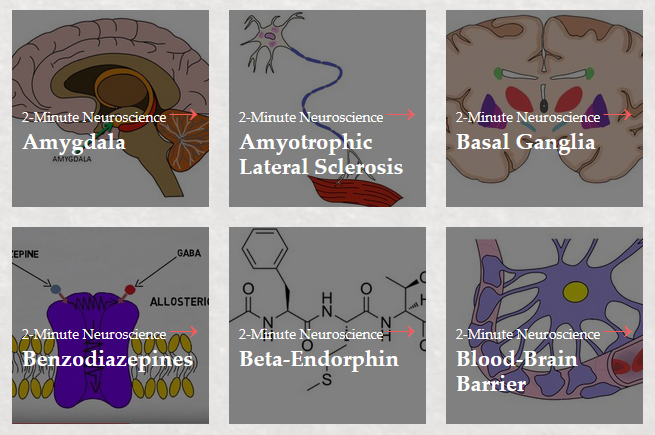Tuesday, 4 May 2021
Neuroscientifically Challenged: a highly educational website about neuroscience
 This week I want to tell you about a highly educational website that offers a wealth of information about neuroscience. Its name is Neuroscientifically Challenged, and its author is Marc Dingman. Dingman began blogging about neuuroscience in 2008, as his interest in the subject was growing. He took a break from writing the site in 2010 to concentrate on finishing his doctorate in neuroscience, which he received in 2014, when he also accepted a teaching assignment at his university. Neuroscientifically Challenged is aimed at the general public, but Dingman draws his references directly from peer-reviewed scientific articles and monographs on neuroscience.
This week I want to tell you about a highly educational website that offers a wealth of information about neuroscience. Its name is Neuroscientifically Challenged, and its author is Marc Dingman. Dingman began blogging about neuuroscience in 2008, as his interest in the subject was growing. He took a break from writing the site in 2010 to concentrate on finishing his doctorate in neuroscience, which he received in 2014, when he also accepted a teaching assignment at his university. Neuroscientifically Challenged is aimed at the general public, but Dingman draws his references directly from peer-reviewed scientific articles and monographs on neuroscience.
Neuroscientifically Challenged offers various kinds of content, all of it written by Dingman. There are, of course, blog posts (over 100, as of this writing). Several of them deal with the history of neuroscience, such as one post on “the mystery of trepanation” and others on famous neuroscientists such as Paul Broca and less famous ones such as Gustav Theodor Fritsch and Eduard Hitzig and their groundbreaking work on the motor cortex.
The site also offers a section called “Know your Brain”, which contains over 70 articles about brain structure, function and pathology. Presented in alphabetical order, the topics range from Alzheimer’s disease, the amygdala and aphasia to ventricles, the vestibular system and Wernicke’a area. (The Brain from Top to Bottom also cover many of these subjects, but not all of them, so this site and Dingman’s complement each other nicely.)
Like The Brain from Top to Bottom, Neuroscientifically Challenged has the intrinsic limitation that scientific theories and scientific paradigms are constantly changing. Whenever you consult Dingman’s content, you should therefore take the time to check what year it was published. One example is his 2015 video on the limbic system, a concept that has since evolved so much that some neuroscientists even reject it entirely and say they would never buy a book that referred to the limbic system as the neuronal substrate of the emotions. Dingman’video does present some reservations about this concept, but in The Brain from Top to Bottom, I have tried to show that there are more.
Neverthless, the 2-minute neuroscience videos like this one are one of the big attractions of the site. There are over 120 of them, explaining numerous basic mechanisms of the human nervous system, such as those of reward, sleep and sensory perception, as well as the effects of neurotransmitters and drugs. These videos show Dingman drawing and labelling diagrams and writing down his bullet points in fast motion as he explains the concepts concerned, somewhat like the more elaborate RSA Animate lecture aboout the divided brain, which I discussed in an earlier post in this blog.
From the Simple to the Complex | Comments Closed







